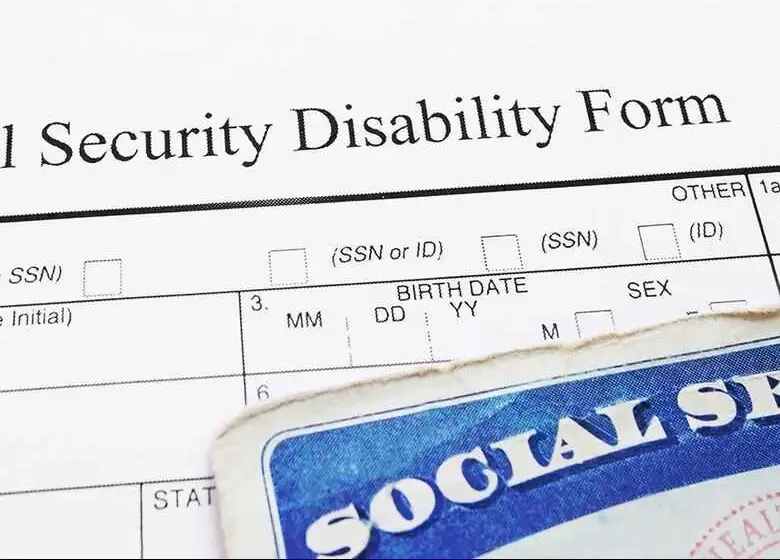
Social Security Disability Benefits for Knee Pain
Have you suffered an injury to your knees or experienced gradual deterioration in your knees that limits your ability to work?
Knee pain can be so severe that an individual is not only unable to stand for long, but it can also limit his/her ability to tolerate prolonged sitting.
When it comes to weight bearing joints like the knees, daily exertion can lead to worsening symptoms. Common problems include pain, swelling, and instability.
If you are unable to work due to knee problems, I suggest you apply for Social Security Disability Insurance (SSDI) and/or Supplemental Security Income immediately.
The inability to stand, walk, or ambulate effectively can limit the performance of most jobs above the sedentary level.
Can You Get Disability for Knee Pain?
Yes, you can potentially receive Social Security Disability for knee pain. However, the process isn’t automatic and you’ll need to meet specific criteria.
Key Factors in Disability Approval for Knee Pain
- Severity of the condition: Your knee pain must be severe enough to significantly limit your ability to work.
- Duration: The condition must have lasted or be expected to last for at least 12 months.
- Impact on work: Your knee problems must prevent you from doing your past work and any other type of substantial gainful activity.
Vocational Experts and Types of Knee Conditions That May Qualify for Disability
Many vocational experts (VEs) state that most jobs performed while standing up require the ability to stand or walk at least six hours out of an eight-hour day. If a cane or other assistive device is required, it may prevent the performance of any competitive employment.
In my experience, the number of jobs can greatly decrease if a claimant has been prescribed a cane or walker.
Limiting the number of jobs a claimant can perform, known as eroding the job base, can be the key to a favorable Social Security determination.
Many of my clients with chronic knee problems report swelling and pain, even while sitting. Sometimes, they report that elevation of their legs can reduce that swelling and pain.
Many VEs will testify in disability hearings that elevation of the legs over a certain height can preclude work at the sedentary exertional level.
A statement from a qualified medical source supporting the need to elevate the legs, the height of the elevation, and the duration of the elevation can be crucial to establishing this limitation.
With all disability claims, medical records are essential to getting the disability benefits that you deserve.

Knee Problems Preventing You From Working?
Contact us now for a free, no obligation consultation. We’ll assess your case, help you understand your situation and explain your options.
Types of Knee Conditions That May Qualify for Disability
Several knee-related conditions might qualify you for disability benefits:
- Osteoarthritis: A common form of arthritis that occurs when the protective cartilage wears down
- Rheumatoid arthritis: An autoimmune disorder that can affect the knees
- Torn ligaments or meniscus: Injuries that can cause long-term pain and instability
- Knee replacement: If you’ve had a knee replacement and still experience significant limitations
The Application Process
Step 1: Gather Medical Evidence
Documentation of surgeries, progress notes, physical therapy, treating source statements, or medication prescriptions are necessary to establish a disabling condition. Your case should be well thought out and supported; every claim requires a strategy or theory of the case that supports a finding of disabled.
Collect:
- Detailed medical records
- X-rays, MRIs, or other imaging results
- Surgical reports (if applicable)
- Physical therapy notes
- Medication lists and their effects
Step 2: Apply for SSDI and/or SSI
You can apply for Social Security Disability Insurance (SSDI) and/or Supplemental Security Income (SSI) online, by phone, or in person at your local Social Security office.
Step 3: Provide a Detailed Description of Your Limitations
Be specific about how your knee pain affects your daily life and ability to work.
For example:
- How long can you stand or walk?
- Do you need assistive devices like a cane or walker?
- Can you climb stairs or lift objects?
- How does sitting for long periods affect your knee pain?
How the Social Security Administration Evaluates Knee Pain
The SSA uses a five-step process to determine if you qualify for disability benefits:
- Are you working?
- Is your condition severe?
- Does your condition meet or equal a listing in the Blue Book?
- Can you do your past work?
- Can you do any other type of work?
The Blue Book and Knee Impairments
The SSA’s Blue Book lists impairments that automatically qualify for disability. While there’s no specific listing for knee pain, your condition might fall under:
– Section 1.02: Major dysfunction of a joint
– Section 1.03: Reconstructive surgery or surgical arthrodesis of a major weight-bearing joint
If your condition doesn’t meet a listing, you may still qualify based on your Residual Functional Capacity (RFC).
Residual Functional Capacity (RFC) and Knee Pain
Your RFC is an assessment of what you can still do despite your limitations.
For knee pain, important factors include:
- Standing and walking: Most jobs require standing or walking for at least 6 hours in an 8-hour workday.
- Sitting: If you can’t sit for long periods, it may limit you to sedentary work.
- Use of assistive devices: Needing a cane or walker can significantly impact your ability to work.
- Leg elevation: If you need to frequently elevate your legs, it could preclude most jobs.
Tips for Strengthening Your Disability Claim for Knee Pain
- Follow your doctor’s orders: Consistently attend appointments and follow prescribed treatments.
- Keep a pain diary: Document your daily pain levels and how they affect your activities.
- Get a supportive statement from your doctor: A detailed opinion from your treating physician can be very influential.
- Be honest about your limitations: Don’t exaggerate, but don’t downplay your symptoms either.
Common Reasons for Denial and How to Appeal
If your initial claim is denied, don’t lose hope. Many claims are approved on appeal.
Common reasons for denial include:
– Lack of sufficient medical evidence
– Failure to follow prescribed treatment
– Incomplete application
You have the right to appeal a denial.
The appeals process includes:
- Reconsideration
- Hearing before an Administrative Law Judge
- Appeals Council Review
- Federal Court Review
Don’t hesitate to seek legal help if you’re struggling with the application process and don’t do it all alone. Work with seasoned disability attorneys so you have a solid team behind you that can guide you through the complexities of the system and help you get the benefits you deserve.
Do I Qualify for Disability? - Find Out Here
Not everyone is eligible to receive social security disability benefits, find out if you qualify in a few minutes.







